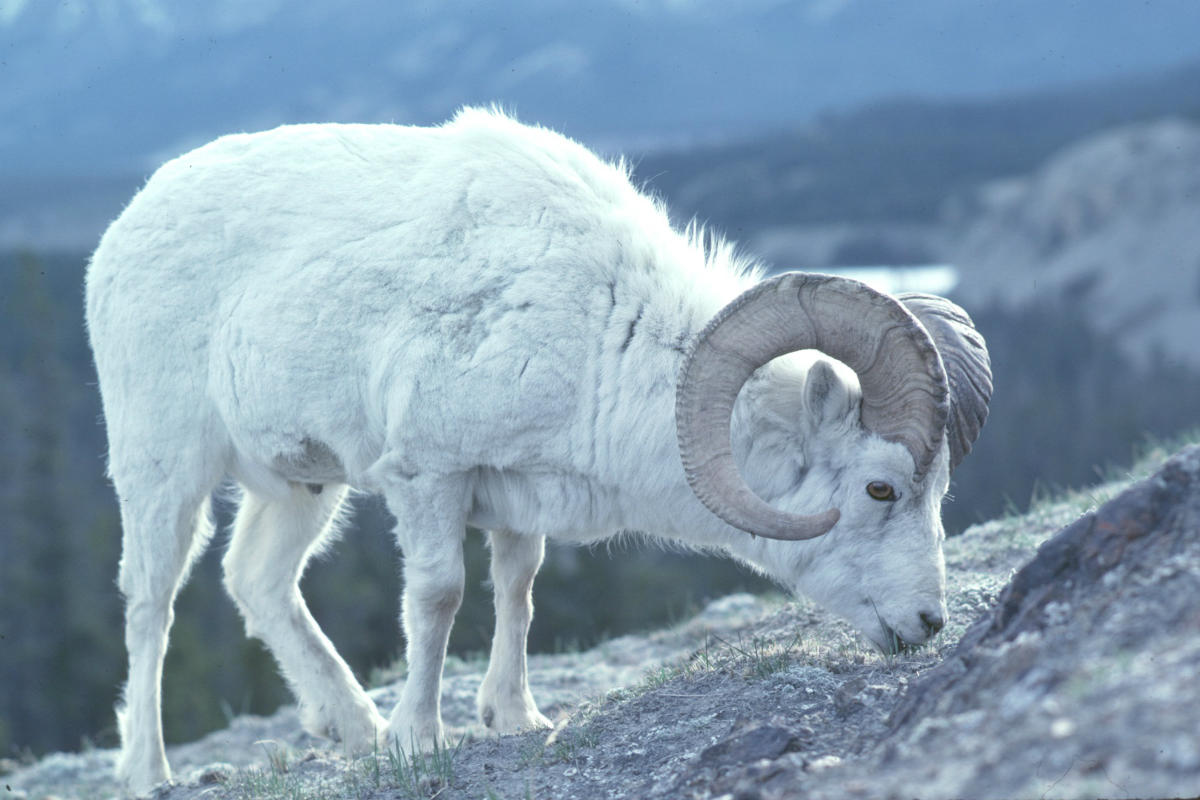
Many Dall's sheep, a subspecies of thinhorn sheep that is pictured here, have been misidentified as Stone's sheep. Image courtesy of Zijian Sim.
The already-rare Stone's sheep of the Yukon is 20 per cent less common than previously thought, according to new research by University of Alberta biologists.
The study examined 123 different DNA markers in approximately 2,800 thinhorn sheep in British Columbia and the Yukon, with the goal of mapping population boundaries. Results show significant overestimation of certain subspecies of thinhorn sheep, like Stone's sheep, due to misclassification.
"That means that population surveys, which are based on current maps, have been over-counting the number of Stone's sheep in Canada," explained Zijian Sim, PhD student in the Department of Biological Sciences. "When correctly classified as Dall's sheep, our results show that the rarer subspecies is even rarer than we once thought, about 20 per cent less than previously thought."
Part of the problem stems from wildlife management units that are bound by traditional political, cultural, and geographical criteria, which do not necessarily line up with biological population boundaries.
Mistaken identity
"The use of DNA markers allows us to directly measure the genetic differentiation between populations, essentially allowing the sheep themselves to tell us where these populations' boundaries are," said Sim, who conducted this research under the supervision of Professor David Coltman. "Unfortunately, we found that sheep tend to ignore our neat political and geographical lines."
The findings have implications for wildlife management and conservation efforts, highlighting the need for inter-jurisdictional planning where thinhorn sheep population straddle political and geographical boundaries, such as provincial borders or mountains. "In fact, our study has already prompted discussions of co-management between relevant regulatory agencies in British Columbia and Yukon for cross-border herds," added Sim.
The study stems from previous research on the misclassification of Stone's sheep based on coat colour.
This study is the result of a collaboration between the University of Alberta, British Columbia's Ministry of Lands, Forests, Natural Resource Operations and Rural Development, and the Yukon Department of Environment. The paper, "Management implications of highly resolved hierarchical population genetic structure in thinhorn sheep," was published in Conservation Genetics(doi: 10.1007/s10592-018-1123-2).